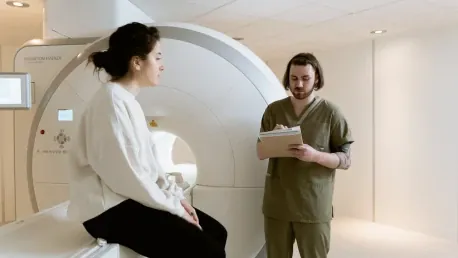In a groundbreaking advancement, MIT researchers have developed a revolutionary technique in the realm of metabolic imaging. This noninvasive method utilizes laser light to study living cells, providing valuable insights into disease progression and treatment responses. Traditional metabolic imaging methods face significant roadblocks due to light scattering when penetrating biological tissues, which hinders both penetration depth and image resolution. However, this new method more than doubles the typical depth limit and enhances imaging speeds, resulting in richer and more detailed images. This innovation promises to open new research pathways and potentially improve clinical diagnostic procedures, offering a substantial leap over earlier methodologies.
Overcoming Traditional Limitations
Traditional metabolic imaging methods often require preprocessing of tissue, such as cutting or staining with dyes, which can alter the tissue and affect the accuracy of the results. The new approach developed by MIT researchers eliminates the need for such preprocessing. Instead, it leverages a specialized laser that illuminates deeper into the tissue, provoking certain inherent molecules within the cells and tissues to emit light. This preserves a more natural and precise representation of the tissue’s structure and function and avoids the complications and potential inaccuracies introduced by conventional invasive techniques.
The innovation hinges on adaptively customizing the laser light for deeper penetration. Researchers employed a device known as a fiber shaper, which they control by bending it to tune the color and pulses of light. This minimizes scattering and maximizes the signal as the light delves deeper into the tissue, enabling clearer and farther-reaching imaging. By eliminating the need for altering the tissue with dyes or cutting, scientists can observe the natural state of living cells, which is crucial for understanding various biological processes and disease mechanisms more accurately.
Technical Advancements and Methodology
The new technique brings a significant improvement in the depth penetration of metabolic imaging, potentially opening new pathways to explore metabolic dynamics deep within living biosystems. This method stands out particularly in demanding imaging applications such as cancer research, tissue engineering, drug discovery, and the study of immune responses. According to Sixian You, an assistant professor in the Department of Electrical Engineering and Computer Science (EECS) at MIT, this work significantly enhances the scope and resolution of label-free metabolic imaging. The ability to observe cells and their interactions deep within tissues presents a new frontier for scientific research, providing unprecedented opportunities for discovery and innovation.
The researchers tackled the challenge of generating ideal laser light with specific wavelengths and high-quality pulses for profound tissue imaging by using a multimode fiber. This robust optical fiber, coupled with a compact device known as a “fiber shaper,” allows precise modulation of light propagation. By adaptively altering the fiber’s shape, the laser’s color and intensity are tweaked to reduce scattering, enhancing generation efficiency and yielding clearer images even within deep tissue layers. This technological advancement addresses a significant limitation in earlier imaging techniques and represents a critical step forward in the field of biomedical optics.
Significant Findings and Biomedical Applications
The applied research reveals significant findings. When tested, MIT researchers’ imaging device could penetrate over 700 micrometers into a biological sample—surpassing the former best techniques, which reached about 200 micrometers. Such deep imaging permits researchers to observe cells at multiple levels within a living system, potentially revolutionizing the study of metabolic changes at various depths. Moreover, increased imaging speed gathers more intricate information on how a cell’s metabolism influences its movements in both speed and direction. The ability to capture these details in real-time offers a new dimension to the understanding and monitoring of cellular processes.
One prominent example of the tangible biomedical applications of this technique is the study of organoids—engineered cells that mimic organ structures and functions. Current challenges in precisely observing internal developments within organoids lie in the necessity to cut or stain the tissue, which invariably kills the sample. The new imaging technique circumvents this by allowing researchers to monitor the metabolic states inside a living organoid noninvasively as it grows and evolves. This breakthrough enables scientists to conduct longitudinal studies on organoid development and function, contributing to fields such as developmental biology and personalized medicine.
Future Prospects and Technological Innovations
In a groundbreaking development, MIT researchers have unveiled a revolutionary technique in metabolic imaging. This noninvasive method employs laser light to explore living cells, offering crucial insights into how diseases progress and how treatments work. Traditional metabolic imaging techniques encounter significant obstacles due to light scattering when they penetrate biological tissues, which limits both the depth of penetration and the resolution of images. However, this new technique more than doubles the usual depth limit and accelerates imaging speeds, leading to more detailed and richer images. This advancement is poised to unlock new research avenues and potentially enhance clinical diagnostic practices, marking a significant leap beyond previous methodologies. Additionally, the improved depth and speed could allow scientists to observe biological processes in real-time, leading to a better understanding of cellular functions and disease mechanisms. Ultimately, this innovation may translate into more precise and effective medical treatments, signaling a major improvement in both research and healthcare fields.









